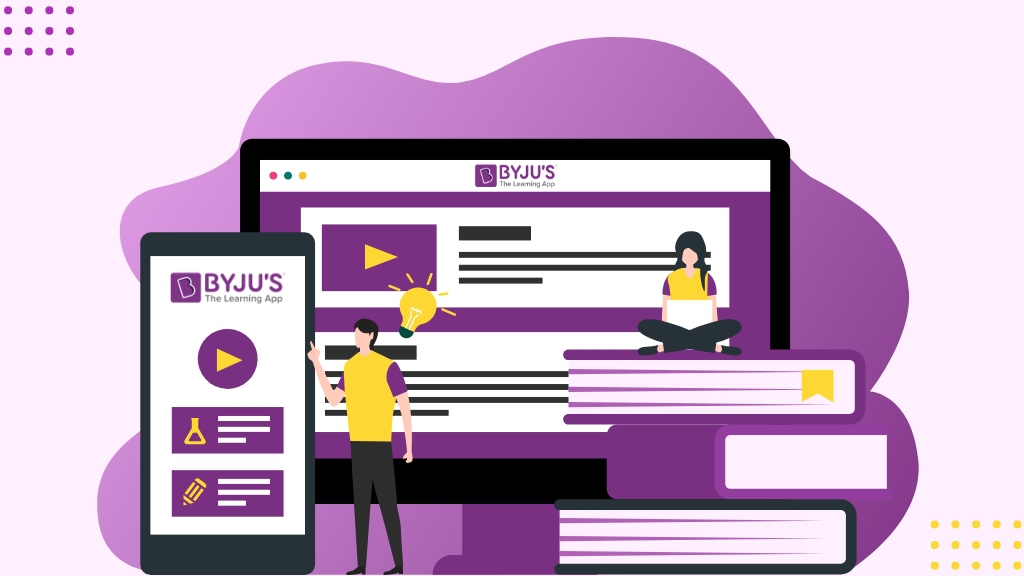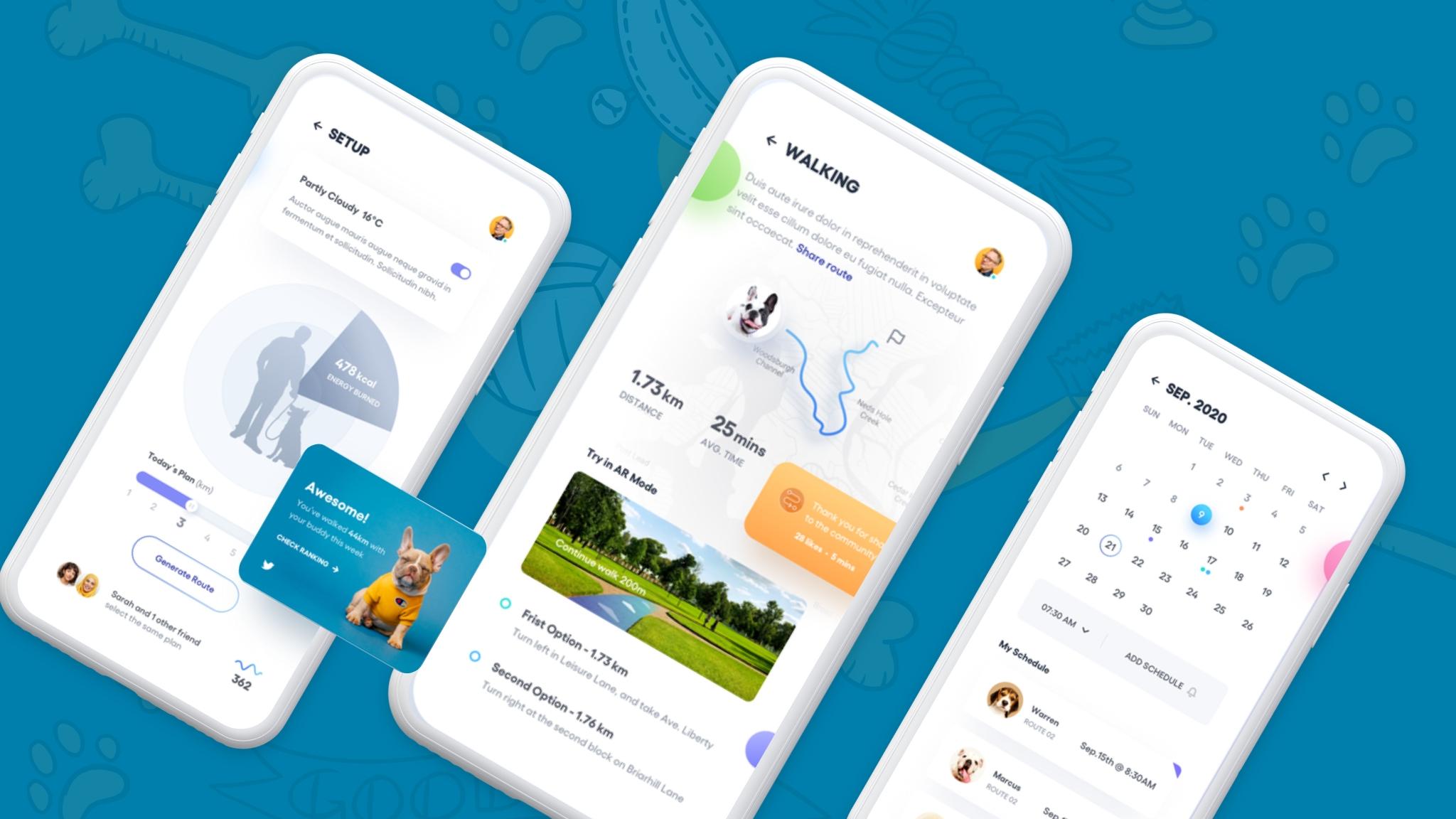Share
Comprehensive Guide To Last Mile Delivery Software With Cost Estimation.
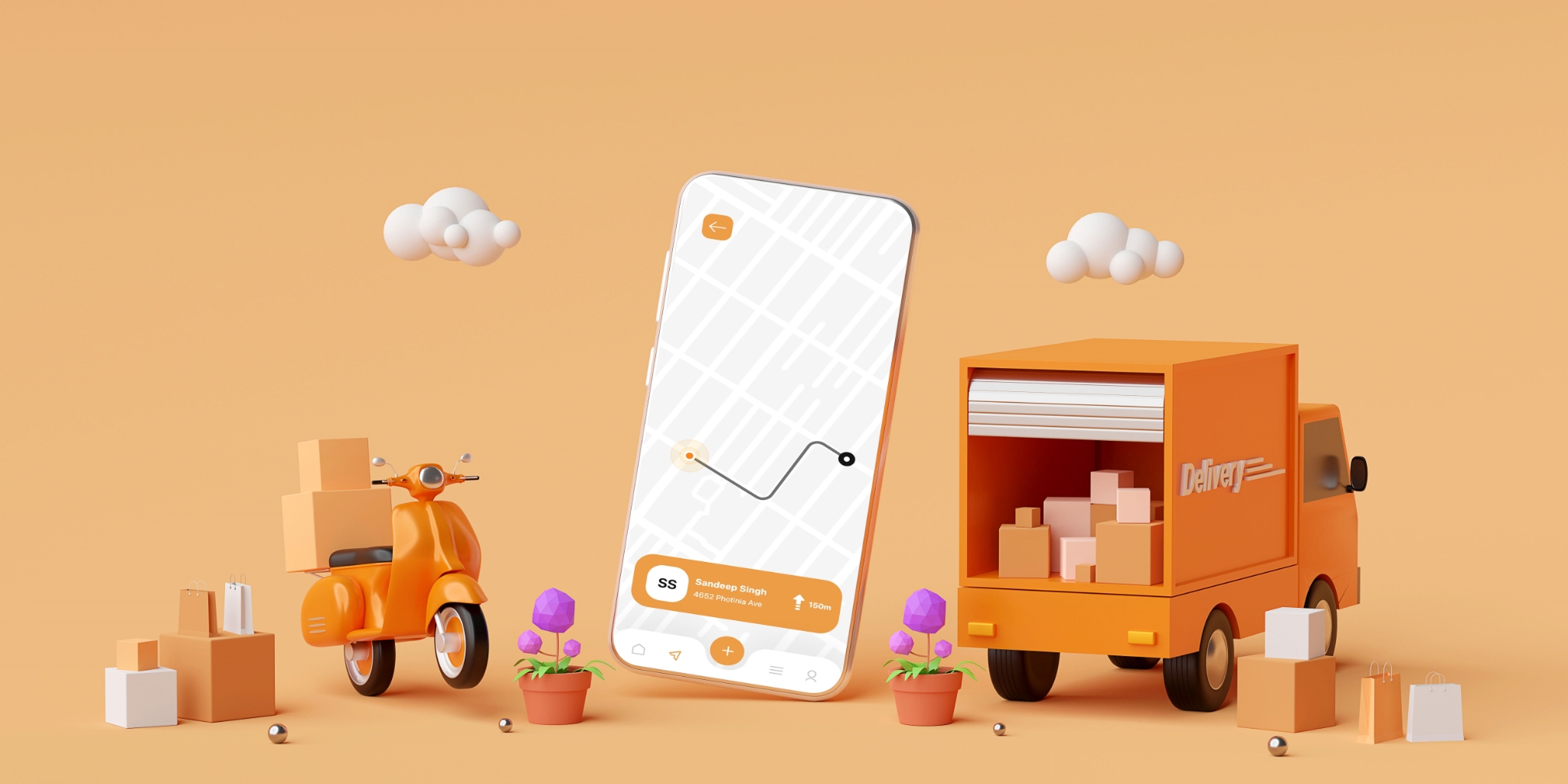
As the market expands, we’re seeing major changes in customer needs and expectations, particularly in the shipping and logistics sector. Customers become accustomed to the advantages of shopping from home. Earlier, delivery usually takes more than 6 days. But now, if firms take the same time, customers are more inclined to cancel orders since they know that other companies might deliver the same thing in a short period of time.
According to research by Accenture,
Ecommerce has risen to a $3.88 trillion worldwide business in the previous few years. eCommerce revenues are anticipated to reach $4.48 trillion by the end of 2021.
In this blog, we will learn about the last mile delivery software and the challenges and potential of last mile delivery, and how much does it cost to develop a last mile delivery solution with Importance. Retailers are searching for rapid, flexible last mile delivery solutions to meet the rising need for seamless, instant delivery. To grasp this, we must first learn what last mile delivery entails and what the key last mile issues are.
What is Last Mile Delivery Software?
Last mile delivery is the endpoint in the delivery process when an item is sent from a transportation hub to its final destination, which is generally a person’s home or a retail business.
It is the most important phase in the delivery process, and firms want to make sure everything goes as smoothly as possible. This is to meet the growing need for fast delivery among consumers, particularly in the e-commerce, food delivery, and retail industries. It’s also the most expensive part of the journey that products take to get to their final destination.
Last mile delivery is the most inefficient operation in the whole delivery chain, according to 61% of logistics organizations. So, let’s take a look at some of the most critical elements that influence last-mile delivery.
The Process Involved In last Mile Delivery Software
The last mile delivery works both for external and internal fleet management. The process mainly involves five steps:
- The orders are handled via a centralized system. Both the client and server will be able to follow and understand where the order is in the supply chain as a result of this.
- The order is processed and delivered to the transportation hub. The objective is to reduce the time it takes from arrival at the hub to delivery at the ultimate destination.
- The delivery assignment is a strategic procedure that assigns packages to a route and the most efficient delivery method.
- Orders are scanned when departing from the transportation hub, to keep the record and stakeholders will get updated for the final mile.
- And in the last step, the shipment has arrived at its destination, and delivery has been confirmed.
Some Other steps, such as acquiring proof of delivery or customer feedback, are available, although they are not required for every business.
Importance Of Last Mile Delivery In The Digital Era
For any supply chain business, last mile delivery is the most important element. The importance of last-mile delivery has risen dramatically in recent years as a result of the advent of technology in the retail industry, which has resulted in strong rivalry among eCommerce firms. Every year, eCommerce sales rise quickly with customer expectations for fast delivery.
According to Research,
Worldwide eCommerce sales are expected to rise at a rate of 16.5% each year by 2020.
An app like Amazon is a great example of that. In the year 2018, Amazon accounted for 41% of the overall retail market in the United States. And it was largely owing to Amazon Prime’s same-day and next-day delivery options that this occurred.
Many other eCommerce sites are attempting to imitate Amazon’s success by enhancing their last mile delivery software in order to provide quicker service. However, it is not simple. To accomplish it, businesses must overcome various challenges mentioned below.
Challenges Faced In The Last Mile Delivery Software
Last-mile delivery is a difficult task. It may quickly add up, resulting in missed delivery deadlines, increased fuel expenses, and erroneous deliveries. Let’s look at some of the other issues that come with last-mile delivery.
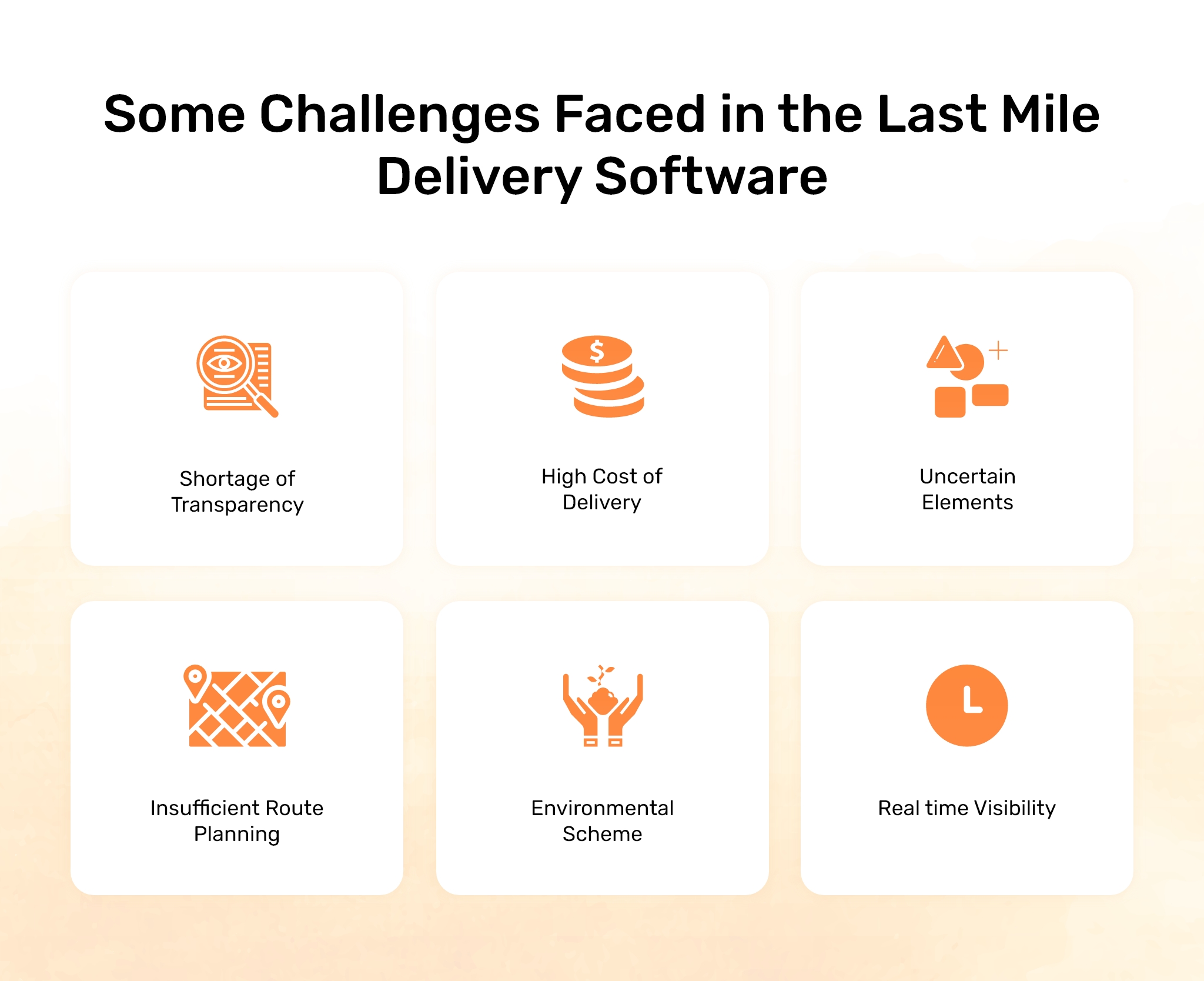
1.Shortage of Transparency
Buyers want to know where their goods are located and when they will arrive. As a result, the most important condition for developing trustworthiness is visibility. The majority of firms provide package trace IDs that reflect the product’s delivery status. People aren’t happy with tracking codes in today’s tech-driven society. Even though the delivery is made the same day, they want to inspect every stage of the last mile procedure.
2.High Cost of Delivery
Retailers and logistics firms have a dilemma in providing an excellent delivery experience while being profitable. In fact, the last mile alone accounts for 28% of the total delivery cost. A lack of infrastructure to deliver items on time is one of the primary factors. Failed deliveries, long routes, driver salaries, and fleet operations all have a substantial influence on delivery costs.
3.Uncertain Elements
We can only foresee one thing when it comes to last-mile delivery: it is unexpected. Some last-mile issues are beyond human control, such as traffic, weather, and flat tires. The only thing logistics businesses can do is maintain constant communication and devise a backup plan for delivering goods swiftly.
4.Insufficient Route Planning
Route planning may be perplexing and psychologically exhausting for a novice. Several elements, such as fuel economy and environmental laws, have a role. The main cause of late delivery is poor route planning. Logistics businesses may utilize route optimization tools to overcome this barrier and increase efficiency.
5.Environmental Scheme
To provide a fantastic delivery experience to clients, businesses must collaborate with different logistics companies. An eCommerce firm, on the other hand, can be a substantial source of carbon emissions. With customers becoming increasingly conscious of environmental concerns, last-mile solutions that reduce pollution must include electric cars.
6.Real time Visibility
Retailers want real-time inventory insight across the whole store and supply chain process to accurately accept, fulfill, and finish orders across various delivery choices. To improve planning, execute orders promptly, and eliminate mistakes across the supply chain, companies must be accurate with inventory placement.
Cost Estimation
The cost of last mile delivery software is determined by a number of elements, including the sophisticated technological stack utilized, the features and functions provided, the platforms integrated, and so on. As a result, selecting the best mobile app development company for your app is critical.
At AppDukaan, we strive to keep our clients informed about the last mile delivery solution process and next stages. However, if you want to include any prominent features in your software, the costs will likely increase.
If you have a limited budget, consider developing a cross-platform mobile application to advertise your business. The following are the elements that influence the cost of developing the last mile delivery software:
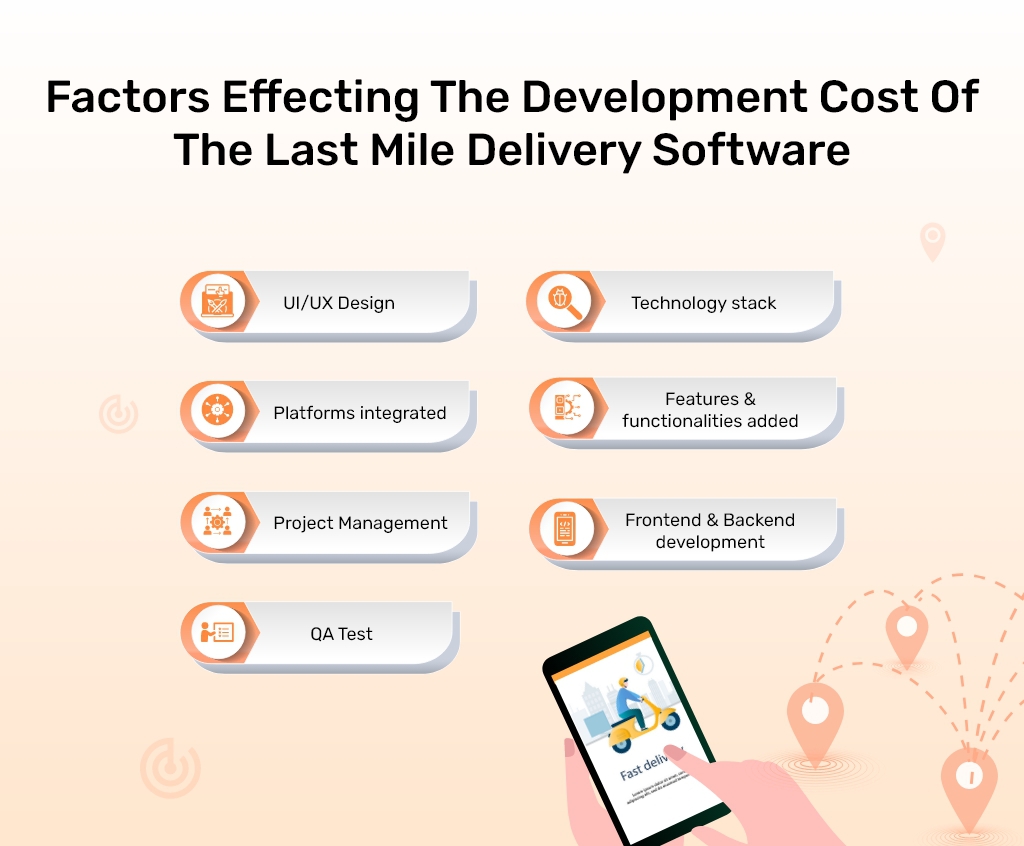
- UI/UX Design
- Frontend & Backend development
- Project Management
- QA Test
- Features & functionalities added
- Technology stack
- Platforms integrated
A basic mobile app might cost anything from $5000 to $15,000 to build. The development cost might grow from $20000 to $25000 if you want to include sophisticated features and technology. However, this is only a preliminary estimate, and the firm you pick will be able to provide you with a more precise budget for the creation of last mile delivery software.
Future Scope Of Last Mile Delivery Software
The ECommerce sector will continue to evolve, and logistics will adapt in response to combining it. To stay competitive, eCommerce merchants and the logistics businesses that support them must embrace best practices for the last mile delivery software that enable them to give appropriate delivery options and services to their consumers while boosting efficiency at every step of the delivery process.
Today’s technology enables optimizing the delivery process easier than ever before, allowing businesses and service providers to increase efficiency and profitability. While addressing their immediate concerns, merchants and logistics providers must also guarantee that they are equipped to handle whatever demands are placed on them in the future. Delivering to a different fulfillment location, deploying autonomous cars or drone delivery, or starting a new delivery service are all examples of this.
Retailers and logistics providers may use Bringg’s delivery and fulfillment cloud platform to grow and improve their last mile operations. This becomes automated and digital with Bringg, lowering the load and allowing the companies to grow for more flexibility.
Summary
The last mile delivery will always be the most important aspect of logistics. As a result, every logistics business that wants to stay afloat must improve its last-mile delivery. Investing in a solid last-mile delivery solution will undoubtedly improve your last-mile delivery and, as a result, your profitability.
Let’s find out how to make the last mile delivery solution for your company that will help you achieve your objectives. Send us a note and we’ll get started on the development process.
Rate this article!

I like to learn about technological advancements and perform Case Studies on the Subjects. I am very keen on Learning New technologies. Always excited to expand my horizons, I Keep my Interest in studying marketing and writing content as well.


